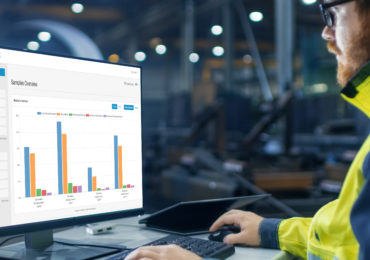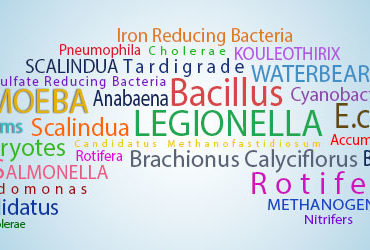LuminUltra’s GeneCount® Next Generation Sequencing (NGS) service takes microbial monitoring to the “next” level by sequencing the 16S rRNA gene, present in all bacteria and archaea, allowing for differentiation and identification of all microbes present.
See trends, understand the cause-and-effect relationships of microbes on processes and determine if failures or contamination are due to microbial activity. Our comprehensive NGS report includes application-relevant concentrations and insights, and identifies problematic organism types.
Sequencing of the 16S rRNA gene
The 16S rRNA contains sections that allow individual organisms to be differentiated from one another and classified to the genus level. Based on this classification, we gain information about how they could impact industrial water systems.
Simple process for preserving sample
GeneCount® NGS testing service begins with preservation at the point of sampling using our simple sample preservation kit for liquids, solids, or swabs. Once preserved, the sample will be stable for up to 4 weeks. No expedited or cold chain shipping is required. A sample preservation kit is included with each NGS service contract.
DNA extraction and purification
Upon receipt of your sample, the preserved DNA will be extracted and purified to create a high-quality and concentrated DNA sample, which is ready for testing. The DNA purification process will also remove interferences related to your sample matrix – such as chlorine residual, hydrocarbon molecules or chelators.
qPCR to determine prokaryotes
qPCR will be run on your purified sample to determine the absolute concentration of prokaryotes present in the sample. These results will be used later to estimate the concentrations of different genera from the NGS results. PCR amplification will be run in order to increase the total concentration of DNA before metagenomic sequencing.
Unique tagging distinguishes samples
After this, a unique ID tag will be added to your sample’s DNA. This ID tag allows it to be distinguished from all other samples that will be sequenced concurrently.
DNA sequencing
After amplification and ID tagging, multiple samples are combined into what’s known as a “library” for DNA sequencing, which takes approximately 24 hours. The raw data output produced through sequencing takes the form of specialized .fastq format files that must be further processed using specialized software via computer-based techniques known collectively as “bioinformatics”. These files (two per sample) will then be analyzed with our NGS database, which has been built using input from public databases like Silva, literature searches, and from our own research into specific industries and the microorganisms associated with those industries.
Actionable insights delivered in two weeks
From this, the final NGS report is generated, which includes estimated concentrations for a variety of application-relevant genera, as well as their relative abundances to each other. Problematic organism types are highlighted, and mitigation actions can be implemented based on this information.
There is a whole new level of data available from NGS testing that means system operators and managers can further understand the organisms living in their systems and process, so they can make informed decisions. Learn more about how LuminUltra’s GeneCount® NGS Service can help your system and process.









